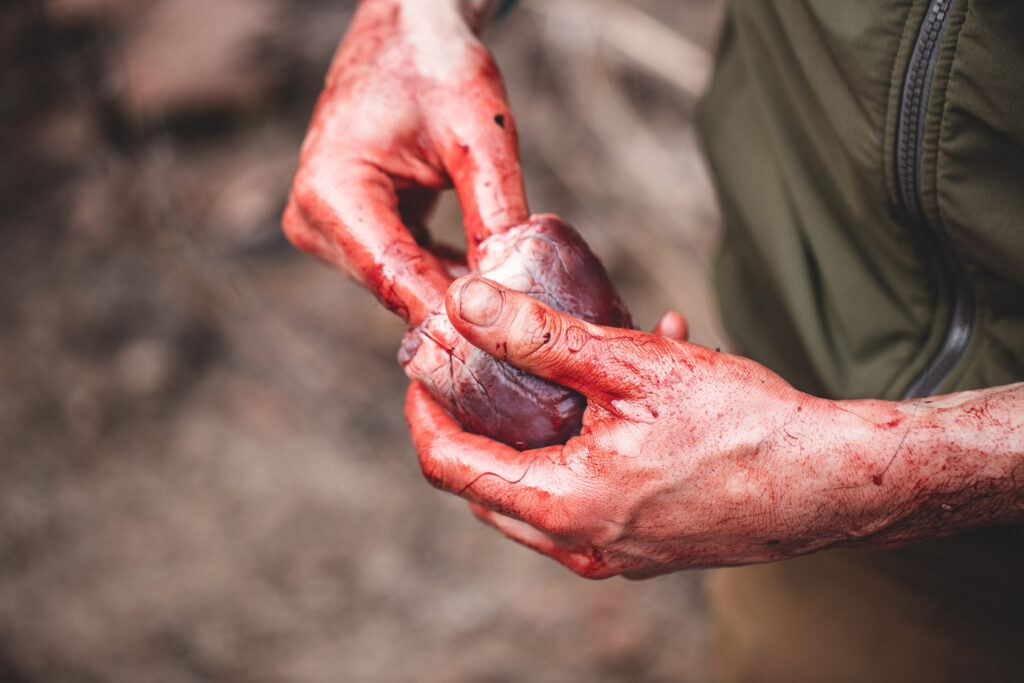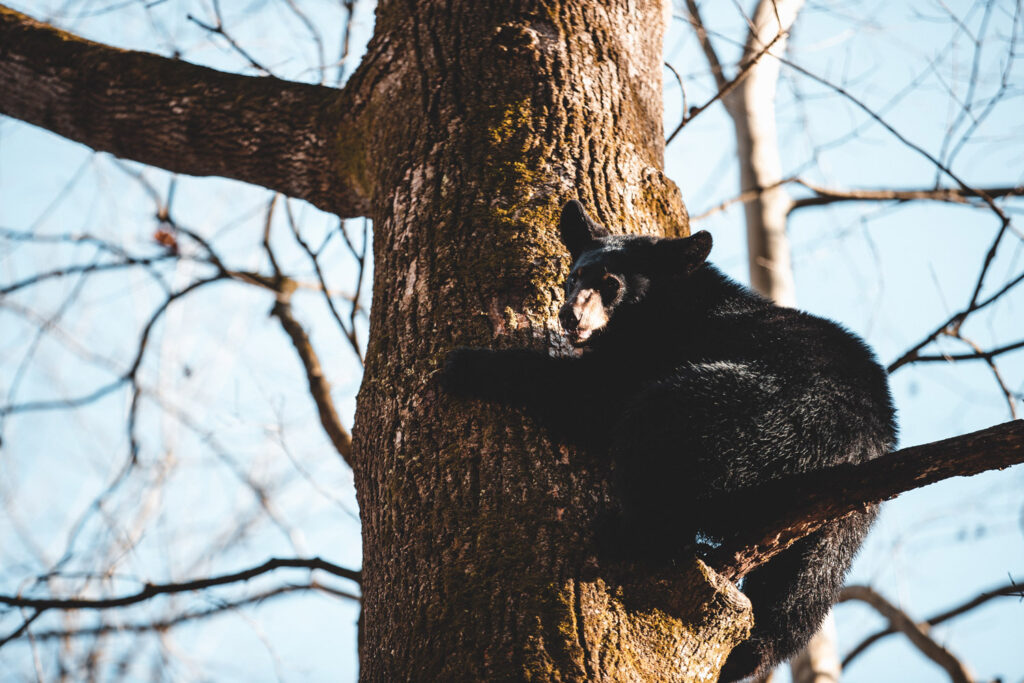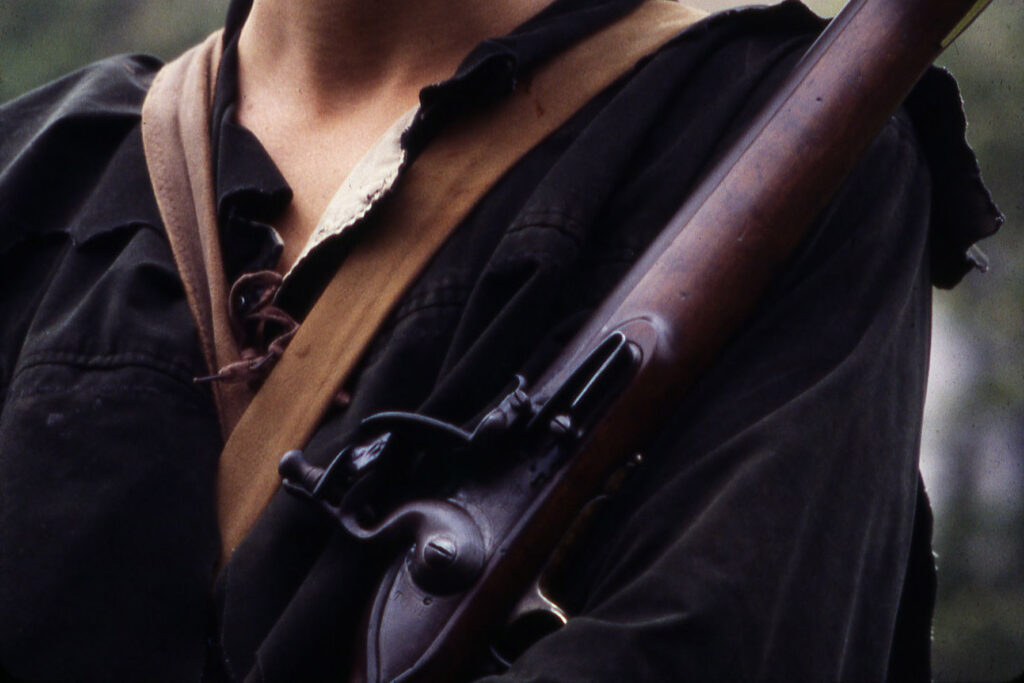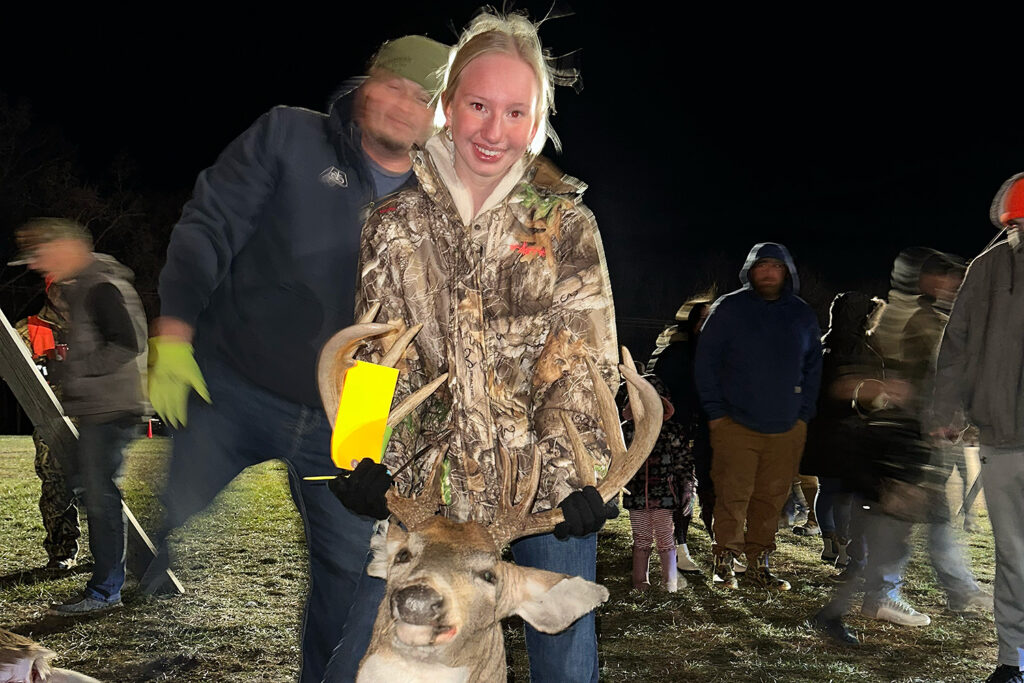Before night falls, a shadow emerges from the cedars. It’s moving at a slow, lumbering pace, cautiously approaching the bait. I’ve stayed upwind, but the bear still seems to know that he’s not alone. I try to stay calm and steady, but the moment (and the large predator only a few paces away) makes my legs tremble. I want him completely relaxed before I draw my bow. A nerve-wracking moment.
My first bear hunt is the hunt my mind revisits most. The early Michigan fall landscape. The smell of the damp leaves and rotting acorns. The way the bears moved through the woods. I also remember the conversations leading up to it.
“Why would you kill a bear? They’re so cute!”
“You won’t even be eating the meat!”
Disney has permeated nearly all of Western culture, making magnificent beasts less beastly. Big eyes, no claws, and a stupid grin on their face. An affront to the true nature of the Ursus Americanus. This is anthropomorphism. It’s a word that might come up occasionally at a local bar trivia night—attributing human characteristics to animals that are anything but.
Bear hunting in Michigan has been around since man could make sharp points. It’s steeped with deep historical and cultural significance. A right of passage for many Native tribes. Early American frontiersmen, like Daniel Boone and David Crockett, were renowned for their bear-hunting skills. Crockett claimed to have killed 105 bears in a single year. Bear meat was preferred over venison because of its mild flavor and renderable fat. That fat, often called “bear grease,” was used for cooking, skincare, waterproofing, and candle making. It was said to cure baldness.
Today, Michigan’s bear population is exploding. Since 2012, it’s grown 21% in the UP and 55% south of The Bridge. Bear hunting seasons are carefully managed to facilitate a sustainable population, requiring hunters to follow strict guidelines and report all harvests. Hunting black bears across the Mitten State is an act of conservation. Without informed harvest regulations, our bears could go the way of the grizzly and the wolf—totally mismanaged by our neighbors to the West and a political nightmare.
All this bounced in my brain as I waited for a large black blob to walk into my shooting lane. In Michigan, there are two widely accepted ways to hunt bears. The first is to use hounds to locate and tree a bear. Some find this unsettling, a sentiment that’s carried over into legislation in several states. It’s “shooting fish in a barrel”—let your dogs loose, sit back and wait, then walk up and blast one out of a tree. Disrespectful. Disgusting.

In reality, these sorts of hunts typically allow for the best conservation. Not only are the hounds highly valued, treated like family by their owners, and the hunting tough, but the hunter makes the most informed decision about the bear they harvest. It’s much easier to determine the age and sex of a treed bear. Hunters can remove the right animal from the gene pool at the right time.
I’ve hunted this way before, chasing hounds all over the mountains and hills of West Virginia. I fell in love with the dogs, the tradition, and the hunt. The houndsmans’ love for their dogs surpassed any feeling some yuppie has for their shih tzu. The miles we put on were tough on my body, and the boar we harvested was exactly what we were looking for. I was changed.
The second method: bait. Another hunt people tend to misunderstand. It’s labor intensive but allows for informed harvesting and an amazing, up-close experience. This is the hunt I’m on this time around.
The setup is simple: find a remote clearing and set up a bait station, using anything from old doughnuts and candy to a mix of molasses and old fryer grease. During the fall, bears are looking to bulk up. Carbs and fat is the name of the game. Throughout the summer, bear hunters keep their bait stations fresh by hauling new loads of gooey, stinky goodness into the area. The hope is to draw bears in and keep them there. Bears have a sense of smell seven times more acute than a bloodhound’s and have been observed to pick up a scent up to 20 miles in the right conditions.
I spend hours looking at the same bait pile, waiting for the right bear to appear. Days pass by slowly, as I sit in the warm September sun. I bring books and try to stay off my phone. Most of my time is spent staring at the bait and trying to will a bear to walk out. The only movement comes from a handful of chipmunks that have picked up the scent of the bait. They gorge themselves on molasses and fall asleep on the bounty, only to wake up and stuff themselves again. “I wonder if chipmunks can get diabetes,” I think to myself. I doze in my treestand.
Between Theodore Roosevelt’s namesake stuffed animal and Winnie-the-Pooh, there are loads of misconceptions about bears’ behavior. You’ll definitely see wild black bears sitting on their haunches, chewing on grass, or playing with trash (most of the time on the side of the road in northern Michigan). However, unlike those personified imposters, these wild animals aren’t exactly snuggly. In Michigan, they’re at the top of the food chain. They have an enormous impact on other fauna in the area—in Michigan alone, they kill thousands of deer fawns each spring. Hunting bears directly impacts the deer population and is another part of the equation used to determine how many tags to allocate each year in Michigan.
After harvesting the bear, I begin the meticulous process of breaking down the carcass. We save the skin, the hide, the baculum (a bone found in the penis of some animals and prized by serious bear hunters), and dozens of pounds of rich, dark meat.

Skinning a bear is unlike skinning other game. Bears have massive forearms and biceps for digging and holding prey, making the skinned carcass resemble that of a bodybuilder. He’s laid out in front of me—a little off putting to say the least. It’s a shocking realization for many first-timers. Maybe Disney wasn’t so wrong after all. I remind myself what I’m here to do and start removing meat from bone.
As I work, I’m thinking about the reward. Bear meat can be the most unique and delicious wild game meat you’ll ever taste. Generally, more subtle in flavor than deer or elk and slightly sweet, bears take on the taste of what they’ve been eating. Anyone who’s hunted bears late in the spring along the coast of Alaska can attest to this. Coastal bear meat takes on a rotten fish flavor. Almost inedible. Conversely, bears that have spent their time in blueberry patches are fantastic. Their fat even takes on a bluish hue.
My bear has spent much of his time in cedar swamps, corn fields, and my bait pile. He’ll eat just fine. Cook the meat as you would pork, since it carries similar parasites. I’ve tried it many ways, but my favorite is “bearbacoa.” Place a whole shoulder in a large pan with peppers, onions, and seasoning, add a bottle of beer, and let it smoke. Delicious.
Tim Dawson is an experienced outdoorsman with a passion for the Mitten State. Follow him on X @TheFairChase1.



